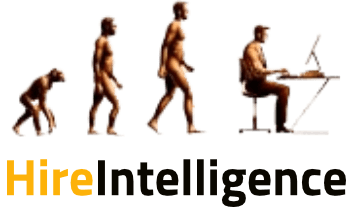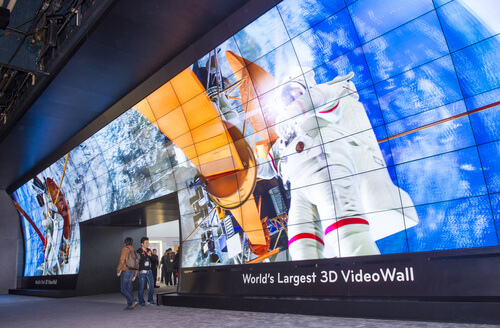As teaching methods evolve, leading universities and learning institutions are embracing new technologies to create more dynamic, engaging learning experiences. At the forefront of this shift is the use of Virtual Reality (VR) and Augmented Reality (AR). Once associated mainly with gaming and entertainment, these technologies are now reshaping how students understand, interact with and retain complex information.
Through the creation of immersive, virtual environments, educators can provide students with the opportunity to engage in hands-on, scenario-based learning without leaving the classroom. Understanding how to use VR for learning is essential for institutions aiming to deliver high-quality, future-ready education programmes.
The Role of AR and VR in Modern Education
Augmented Reality enhances the real world by overlaying digital content, with 3D models or data, onto a user’s physical surroundings. In contrast, Virtual Reality creates a fully immersive experience, placing users inside a computer-generated environment using a VR headset.
Both technologies offer a significant shift from passive learning to active participation. Rather than simply reading about a subject, students can interact with it directly, improving engagement, comprehension and long-term learning outcomes.
This form of experiential learning brings abstract concepts to life, helping students make sense of information that is often difficult to visualise through traditional methods.

Practical Applications of AR and VR in Higher Education
To understand how to use VR for learning effectively, it is helpful to explore real-world applications across different disciplines. Institutions are already seeing benefits by implementing VR in the following areas:
- Medicine and healthcare: VR provides simulated clinical environments where students can practise surgical techniques, conduct virtual dissections and refine procedures without the need for physical cadavers. This safe, repeatable experience is invaluable for developing practical skills.
- STEM and engineering: Students can walk through a virtual prototype of a bridge, explore molecular structures in 3D or simulate physics experiments. VR makes it easier to grasp abstract concepts that are often difficult to visualise using 2D resources.
- Arts and humanities: Learners can take virtual trips to historical sites, museums or exhibitions, offering deeper cultural understanding. AR can also enhance visits to physical museums by overlaying contextual information onto exhibits.
- Vocational and soft skills training: Scenario-based VR experiences allow students to practise soft skills such as public speaking or conflict resolution. They can also learn technical skills in simulated environments that replicate real-world workplaces.
Choosing the Right Hardware for Your Needs
A key part of planning an immersive project is selecting the right equipment. The hardware generally falls into three categories:
- Tablets and smartphones for AR: The most accessible way to deploy AR is through the devices students already use. Modern tablets and phones have the power and camera technology to deliver high-quality AR experiences, making them ideal for large-scale rollouts.
- Standalone VR headsets: Devices like the Meta Quest 3 are self-contained and easy to set up. They are ideal for group sessions and training where freedom of movement and simplicity are key.
- PC-tethered VR headsets: This hardware connects to a powerful computer to run more graphically intensive simulations, suited for specialised research and high-fidelity training.

The Benefits of Immersive Learning
Integrating VR and AR into higher education offers clear advantages for both students and institutions.
For students:
- Deeper understanding of content: Virtual simulations enhance the clarity of difficult topics by offering visual and interactive representations.
- Improved retention: Active participation in a virtual experience supports stronger memory formation than passive methods.
- Increased student engagement: Gamified, hands-on environments make learning more stimulating and enjoyable.
- Safe experimentation: Students can explore, experiment and learn from mistakes without any real-world consequences.
For institutions:
- Reduced reliance on physical resources: Virtual environments can replicate labs, workshops and field trips; removing space, budget and scheduling constraints.
- Scalable training opportunities: One VR experience can serve hundreds of students across multiple locations, including remote learners.
- Enhanced reputation and appeal: Offering cutting-edge learning tools positions institutions as forward-thinking and student-focused.
- Cost-effective resource planning: Over time, virtual tools can replace or supplement expensive equipment and site visits.
Making AR/VR Accessible Through Renting Technology
Despite the clear benefits, many institutions are unsure how to begin using VR for learning without a large capital investment. The upfront costs, ongoing maintenance and fast-moving nature of the technology can present logistical and financial hurdles.
This is where short-term VR rental becomes a practical, cost-effective solution. Renting VR headsets and associated technology allows universities and training providers to:
- Avoid upfront hardware costs: Access the latest VR technology without purchasing large quantities outright.
- Stay current with fast-changing tech: Upgrade easily as new models and features become available.
- Match scale to project needs: Rent the exact number of devices required; for a single open day, a specific course module or a full academic term.
- Simplify deployment: Receive pre-configured equipment ready for use, avoiding setup headaches.
How Hire Intelligence Supports Your Learning
Hire Intelligence works with universities and training providers to simplify the process of implementing AR and VR in education.
We supply the latest headsets, configure them to your requirements, and deliver them anywhere in the UK. With flexible rental terms and ongoing technical support, you can focus on teaching while we handle the logistics.

Take the Next Step Towards Immersive Learning
AR and VR are no longer emerging tools; they are already transforming how students engage with complex subjects. Improve your learning outcomes and make practical use of new technology with straightforward, cost-effective short-term rental.
If you are planning to introduce VR into your teaching or events, Hire Intelligence can help. Contact our team for practical guidance and a tailored quote based on your specific learning objectives.









